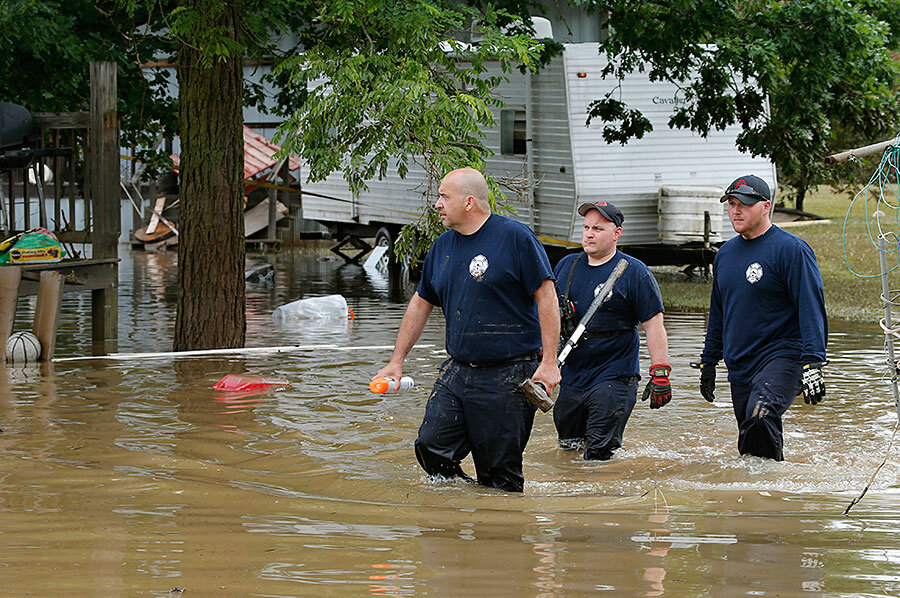West Virginia braces for more rain as flood relief efforts underway
Loading...
Just as West Virginia starts to recover from the worst flooding there in more than a century, more heavy rain is in the forecast.
More than 20 counties were under flood watch Monday, including the three most devastated by rain – Kanawha, Nicholas, and Greenbrier counties. In Greenbrier, at least 17 people have died, and floodwaters have not receded. The amount of rainfall is not expected to near the total Thursday. But enough rain could cause additional flash flooding in areas already impacted by the historic floods, according to The Weather Channel.
Though the torrential rains will likely slow any recovery, a framework is in place to assist West Virginians regain their normal lives, as President Obama designated a federal disaster area there on Saturday, ordering federal aid to residents of Kanawha, Greenbrier, and Nicholas counties that could include grants for temporary housing and repairs. But residents also emphasize the importance of being there for each other.
Take TJ Parker, of Rainelle, W.Va. Mr. Parker rescued an elderly man who called for help, as Parker and his dog, Titan, swam four blocks to safety. Parker says he was forced to hold his breath underwater to support the elderly man.
“I realize that sounds crazy, but you have to do what you have to do at that time,” Parker told the Associated Press.
Up to 10 inches of rain brought on flooding Thursday, with parts of the state receiving 1 to 3 inches in hours. West Virginia received one-quarter of its annual rainfall in one day, and numerous rivers surged to dangerous levels, including Elk River, whose levels broke a record at one stage that had stood since 1888.
The rains across the mountainous state sent torrents of water from rivers and streams through homes and whole towns, with some completely surrounded by water. Hundreds of homes and buildings across the state have been lost or destroyed.
Since Thursday, 25 people have died, the highest in any state from flooding this year.
Hundreds of people have been rescued, said Tim Rock, spokesman for the state Division of Homeland Security and Emergency Management.
Although Monday’s rains will likely inflict more damage, the disaster is already drawing comparisons to the flooding there in November 1985, the state’s most expensive natural disaster. It caused $570 million in damage, with more than 3,500 homes, 180 businesses, and 43 bridges destroyed. Twenty-nine counties were declared federal disaster areas.
"This is the worst I've ever seen," Fayette County Sheriff's Sgt. Bill Mooney, who served in the National Guard during massive floods in 2000-01, told the Associated Press. "Nobody expected 7 inches of (rain) in three hours."
Mr. Obama's declaration of the federal disaster is expected to provide some relief. Residents in the three worst hit counties can receive aid for temporary housing and home repairs, receive low-cost loans to cover uninsured property losses, and qualify for other assistance for individuals and business owners. Federal money is also available for state and local governments is also available on a cost-sharing basis.
This report contains material from the Associated Press.







